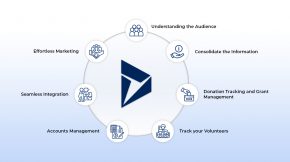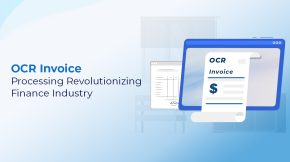Dynamics AX vs Dynamics 365: Why Upgrading is a Smart Business Move
For years, your business has run on a reliable engine: Microsoft AX (also known as ERP Dynamics AX). It has handled your finances, your supply chain, and your operations. It’s been a trusted partner. But the road of technology is always moving forward, and what was once cutting-edge can become a familiar old path while new superhighways open.
That superhighway is Dynamics 365.
The conversation about Dynamics AX vs Dynamics 365 is not just about software. It’s about the future of your business. It’s about moving from a system that simply records your business to an intelligent platform that helps you reinvent it.
Let’s explore why making the switch is one of the smartest decisions you can make.
A Look Back at the Power of Microsoft AX
To understand the decision, we need to walk through what made ERP Microsoft Dynamics AX so much in demand for midsize to large enterprises. What was it that was so well known about Microsoft AX? It was designed for highly complex multinational organizations with needs like:
Advanced Supply Chain Management: Advanced warehouse management (WMS), advanced production scheduling, and complex manufacturing processes.
- Financial Management on a Large Scale: Multi-company and multi-currency consolidations of legal entities in different countries simultaneously.
- Deep Industry-Specific Functionality: Huge functionalities for verticals such as manufacturing, retail, distribution, and professional services, usually with add-ons.
ERP Microsoft Dynamics AX would be the contender heavyweight for enormous organizational setups with sprawling functional requirements that are highly disjointed.
Dynamics 365 Business Central: The Agile All-in-One Solution
Dynamics 365 Business Central is an all-in-one-and-fully-integrated business management solution. Consider it as the next step into the Dynamics NAV pathway, and it looks at small to mid-market companies toward crying out loud to streamline their operations and speed up the growth.
Its salient features are:
- Integrated Financials, Sales, Service, and Operations: Smoothly blends core ERP and CRM-like capabilities into a single affordable solution.
- Streamlined Project Management: Strong time tracking, resource management, job costing, and billing—all perfect for professional services and project-based businesses.
Freedom from Complexity and Faster Implementation: With an integrated platform and modular design, deployments are far quicker and present a lower total cost of ownership compared to their bigger allied counterparts.
From On-Premises Anchor to Cloud Freedom: A Fundamental Shift
To understand the “Why,” the first question should be asked: What is Microsoft AX at its very core?
An ERP made famous in the on-premises land, ERP Microsoft Dynamics AX is an on-prem ERP system. You buy it, install it on your servers, and manage it on your own. It was a huge investment: hardware and IT personnel.
Dynamics 365 Finance and Supply Chain Management (the true successor to AX) is different. It’s a cloud-native service. This single shift changes everything.
No More Costly Upgrades: Think about periodic upgrade projects every few years that are painstakingly complex to put together, expensive to fund, and terribly disruptive. They no longer exist. Dynamics 365 follows the Microsoft tradition and provides continuous automatic updates. You get security patches, compliance tools, and new features without heavy lifting. It is for focus on using the system with your team, not for maintaining it.
Unmatched Scalability: Are you seasonal? Do your businesses undergo sudden growth? The cloud scales with you. You only pay for what you use, allowing you to adapt your resources on the fly without ordering and setting up new hardware.
Intelligence Infused into Your Operations
The old ERP Dynamics AX was excellent at storing data. The new Dynamics AX vs Dynamics 365 debate is won by the former’s ability to understand it. Dynamics 365 is packed with built-in AI and machine learning. It transforms your historical data from a digital filing cabinet into a crystal ball.
- Predictive Insights: Predict cash flow, identify slow-moving inventory before it becomes a problem, and get AI-powered recommendations for optimal customer credit limits.
- Automate the Mundane: Use robotic process automation (RPA) to eliminate repetitive, time-consuming tasks. This frees your employees to work on more strategic, rewarding projects that drive growth.
A study by Nucleus Research found that for every dollar spent on ERP, businesses see an average return of $7.23. With intelligent automation, that return can be even higher.
A Unified Business Universe
Perhaps the most significant win in the Dynamics AX vs Dynamics 365 comparison is integration. The old Microsoft AX often operated in a silo, separate from your CRM and other tools.
Dynamics 365 is built on a Common Data Model, allowing your ERP (Finance, Supply Chain) to connect without a hitch to Dynamics 365 Sales, Marketing, and Customer Service.
Imagine this: Your sales team closes an order in the CRM; the order flows into your financial and inventory systems without any manual data entry. This way, the entire journey of a customer from lead to order, delivery, and payment is available on a single common platform. This breaks down departmental barriers and provides a 360-degree view of your customer, which drastically improves experiences.
Dynamics 365 to Dynamics AX (and F&SCM): The Choice of Your Path
In 2022, Gartner’s study pointed out that today flexibility and agility are among the top-three drivers for ERP modernization, sometimes trumping pure feature depth for many organizations.
Security and Compliance: Built-In, Not Bolted-On
In today’s world, cybersecurity is not an option; it is a necessity. Managing security for an on-premises system like ERP Microsoft Dynamics AX is an endless and complex battle against ever-shifting threats.
Microsoft spends well over $1 billion in cybersecurity research and development every year. As soon as you are off on Dynamics 365, you take advantage of this massive investment. You enjoy immense enterprise grade security, with proactive detection of threats and built-in compliance tools qualified to meet an extensive list of world standards. Your data gets secured in Microsoft datacenters, giving an almost reassuring feeling to you and your customers.
This is where the actual strategic decision is made. The enhancement of Dynamics AX versus Dynamics 365 has several paths.
1. Large, Complex Enterprises: The Choice Enters Dynamics 365 Finance & Supply Chain Management
That is the true successor to the ERP solution, Dynamics AX: if your business requires:
- Global logistics and advanced warehouse management of a complex nature.
- Extensively distributed manufacturing of the lean or discrete variety.
- Managing thousands of users across multiple legal entities with deep regulatory needs.
- Absolute deepest level of operational control and analytics.
Then F&SCM (Dynamics Finance & Supply Chain Management) will have to be your natural choice as it deals with the utmost level of scale and complexity for which your Microsoft AX system was built.
2. Midsize Companies Seeking Efficiency May Consider Dynamics 365 Business Central
For some companies using ERP Microsoft Dynamics AX, perhaps only a fraction of Microsoft’s capabilities has been harnessed. If your needs lean towards:
- Streamlining business processes across finance, sales, and supply chain without being extremely complicated.
- Requiring a unified view of the business without relying upon an immense IT footprint.
- Giving weightage to agility, simplicity, and faster ROI.
- Being located primarily in a single country or a region with standard compliance needs.
Then Business Central could be a more efficient and cost-effective cloud destination, being an exercise to bolster your ERP strength.
Making the Move: Your Path to the Cloud
The journey from Dynamics AX to Dynamics 365 might seem intimidating but it has not to be that way. With the right partner, you can accurately map processes, carry forward crucial data, and train your team to ensure that there is minimal disruption in value realization from day one.
Dynamics 365 vs Dynamics AX: How Do You Decide?
The choice between Dynamics 365 vs Dynamics AX or Business Central would really come down to the dimensions of your business, its complexity, and its international footprint. It is the right fit that helps you grow without complicating processes. This, in fact, is the strategic decision that need not be taken alone.
Being a Microsoft Solutions Partner, Beyond Key has the know-how to assess your current implementation of the ERP Microsoft Dynamics AX. We understand the roadmap ahead for growth, and give you a clear-cut unbiased opinion as to what makes the right smart business decision for you: Dynamics 365 Finance & Supply Chain Management or Dynamics 365 Business Central.
This is the expertise that truly makes a difference.
Ready To See the Difference Yourself?
Moving from Dynamics AX to Dynamics 365 is the defining business evolution from record-keeping to unlocking potential. It is about empowering their people using intelligent tools. It connects the entire organization and builds a resilient and agile future.
Are you wondering about what lies ahead? Well, you need not walk the path alone. Ranked as one of the premier Microsoft solutions partners out there, Beyond Key is armed with deep proficiency and tested methodologies to ensure your transition goes smoothly and successfully. We know ERP Microsoft Dynamics AX in-and-out and wield the mighty power of cloud with confidence.
Let’s start talking about your business aspirations and chart a clear course towards your future with Dynamics 365.
Schedule a free discovery session with Beyond Key’s experts today to identify the perfect cloud ERP path for your unique business.












